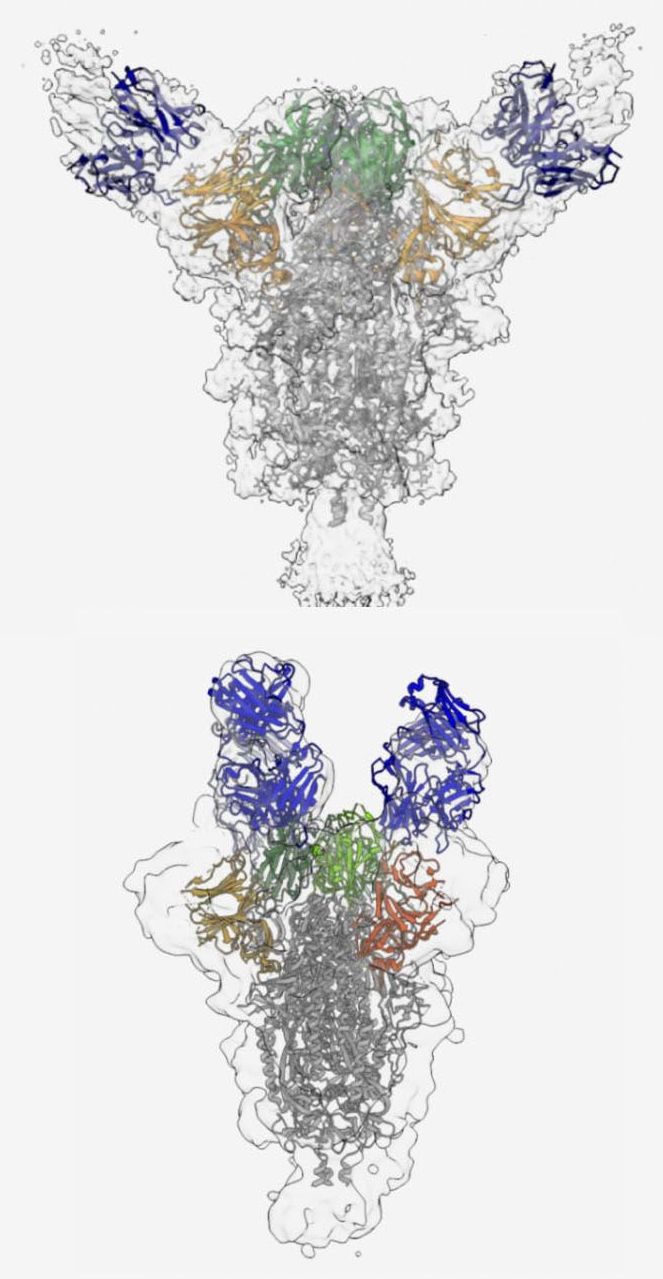Match and mix.
The origin of species is more complex than Darwin envisaged.

Match and mix.
The origin of species is more complex than Darwin envisaged.
If you want to have a look at those special videos become a member and join by clicking this link https://www.youtube.com/channel/UC4AkVj-qnJxNtKuz3rkq16A/join


At the end of 2015, Germany switched on a new type of massive nuclear fusion reactor for the first time, and it was successfully able to contain a scorching hot blob of helium plasma.
But since then, there’s been a big question — is the device working the way it’s supposed to? That’s pretty crucial when you’re talking about a machine that could potentially maintain controlled nuclear fusion reactions one day, and thankfully, the answer is yes.
A team of researchers from the US and Germany have now confirmed that the Wendelstein 7-X (W 7-X) stellerator is producing the super-strong, twisty, 3D magnetic fields that its design predicted, with “unprecedented accuracy”. The researchers found an error rate less than one in 100,000.

NASA just launched a new citizen science project — it wants the public’s help to find and identify brand new exoplanets.
Human Touch
This is the sort of work that technically could be automated with an algorithm trained to spot new worlds, Space.com reports. But it turns out that in this case, there’s no substitute for human judgment.
“Automated methods of processing TESS data sometimes fail to catch imposters that look like exoplanets,” Veselin Kostov, the NASA researcher leading the Planet Patrol project, said in a press release. “The human eye is extremely good at spotting such imposters, and we need citizen scientists to help us distinguish between the lookalikes and genuine planets.”

This video shows how holographic storage works, using green light to write data as a persistent hologram inside an optical crystal. The data can then be read…How does holographic storage work?
See a home you can live in, make a living out, and grow most of your food in too, the ultimate bug-in or bug-out location — on Mars — here on Earth, or just about anywhere! That is why I call it my Universal Habitat. This is a very low ecological footprint home that can be beautiful, almost no energy cost to maintain, could be built affordably, and be resistant to many natural and man-made disasters such as tornadoes, fire, radiation, and worse. This is the ultimate self-sufficient bunker/fortress.
You can support Galactic Gregs by supporting the sister channel Green Gregs by clicking the links below:
See the Special Deals at My Patriot Supply: www.PrepWithGreg.com
Awesome deals for long term food supplies!
For gardening in your Lunar habitat Galactic Gregs has teamed up with True Leaf Market to bring you a great selection of seed for your planting. Check it out: http://www.pntrac.com/t/TUJGRklGSkJGTU1IS0hCRkpIRk1K
LEAF president Keith Comito explains the story of Lifespan.io — a crowdsourcing platform and community to support biomedical research aimed at extending healthy human lifespan.
▼▼ More info and links below ▼▼
HOW CAN YOU SUPPORT US?
▀▀▀▀▀▀▀▀▀▀▀▀▀▀▀▀▀▀▀▀▀▀▀▀▀▀
LEAF / Lifespan.io is a 501©(3) nonprofit organization. Everything we’ve done thus far and everything we will do in the future is thanks to your support — please stand with us to fight the diseases of aging and increase healthy human lifespan.
► Support us with monthly donations by becoming a Lifespan Hero: https://www.lifespan.io/hero
► Make a one-time donation and learn about other ways to support us here: http://lifespan.io/support
► Learn more, and help us #CrowdsourceTheCure: https://www.lifespan.io
► Subscribe: https://www.youtube.com/user/LifespanIO?sub_confirmation=1
THANKS TO THE SUPPORT OF PEOPLE LIKE YOU, WE HAVE:
▀▀▀▀▀▀▀▀▀▀▀▀▀▀▀▀▀▀▀▀▀▀▀▀▀▀
► Crowdfunded over $400,000 for credible research projects addressing the root causes of aging
► Worked with amazing channels like @Kurzgesagt – In a Nutshell and @Life Noggin on videos to inform and engage the public in our work.
► Built up the most trafficked news outlet and online community on the subject of aging research, with over 150,000 members across various platforms and social media: https://www.lifespan.io/news
► Created a monthly livestreamed Journal Club to explain the latest research to you in real time: https://www.lifespan.io/journalclub
► Began to host our flagship Ending Age-Related Diseases annual conference in New York City, bringing together researchers, investors, regulators, press, and the public: https://www.lifespan.io/conference
► Created the premier network of investors focused on supporting this work, the Longevity Investor Network, which holds monthly pitch meetings to review the most promising and credible up-and-coming companies in the field: https://www.lifespan.io/investor
► Built powerful online tools, such as our Rejuvenation Roadmap, which shows you at glance the latest updates in the field: https://www.lifespan.io/roadmap
► Began to create educational video content, such as our LifeXtenShow: https://www.lifespan.io/x10
NEWS & SOCIAL MEDIA
▀▀▀▀▀▀▀▀▀▀▀▀▀▀▀▀▀▀▀▀▀▀▀▀▀▀
News: https://www.lifespan.io/news
Facebook: https://www.lifespan.io/facebook
Instagram: https://www.lifespan.io/instagram
LinkedIn: https://www.lifespan.io/linkedin
Twitter: https://www.lifespan.io/twitter
Discord: https://www.lifespan.io/discord
Newsletter: https://www.lifespan.io/newsletter
YOUTUBE COLLABORATIONS:
